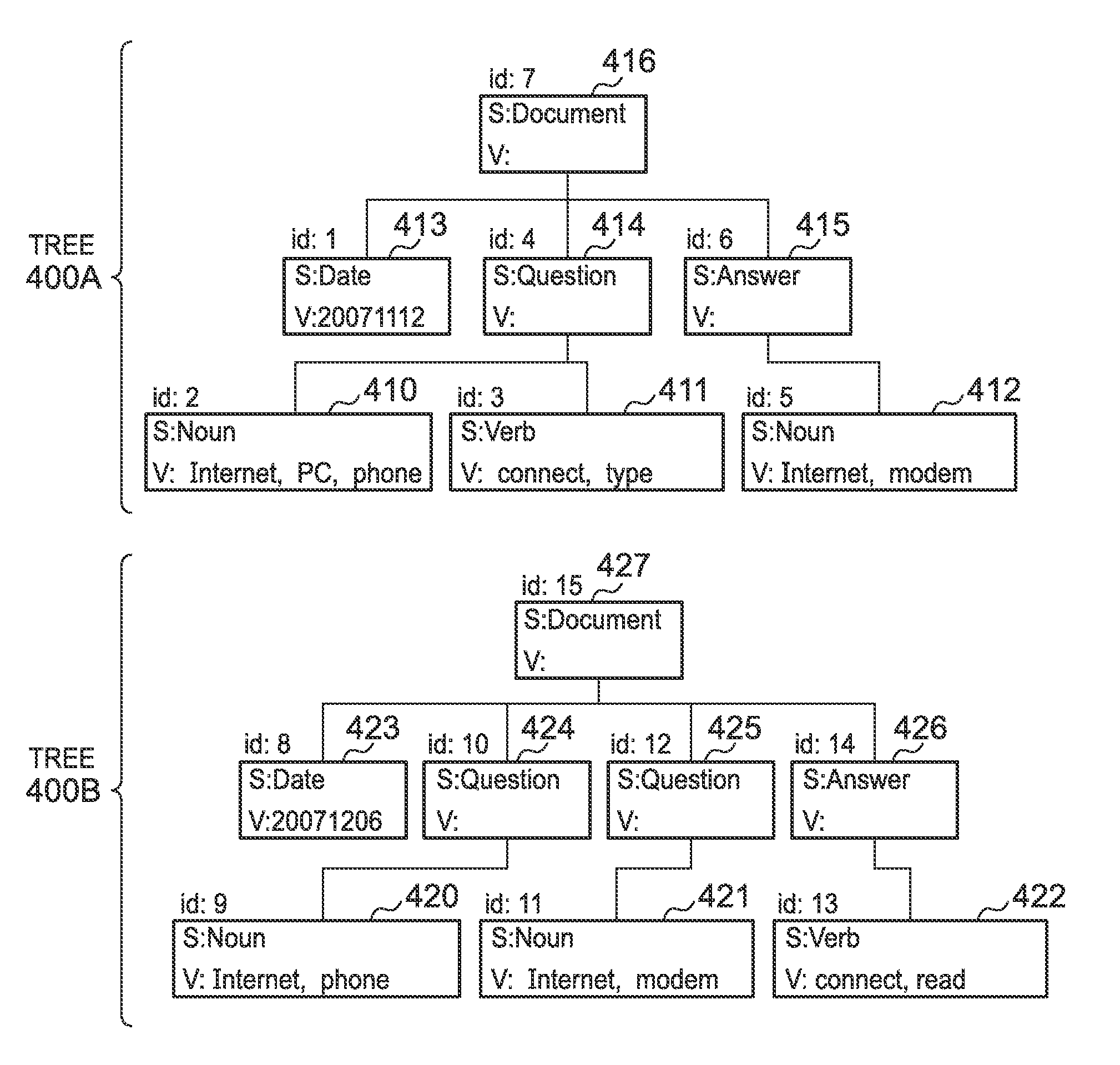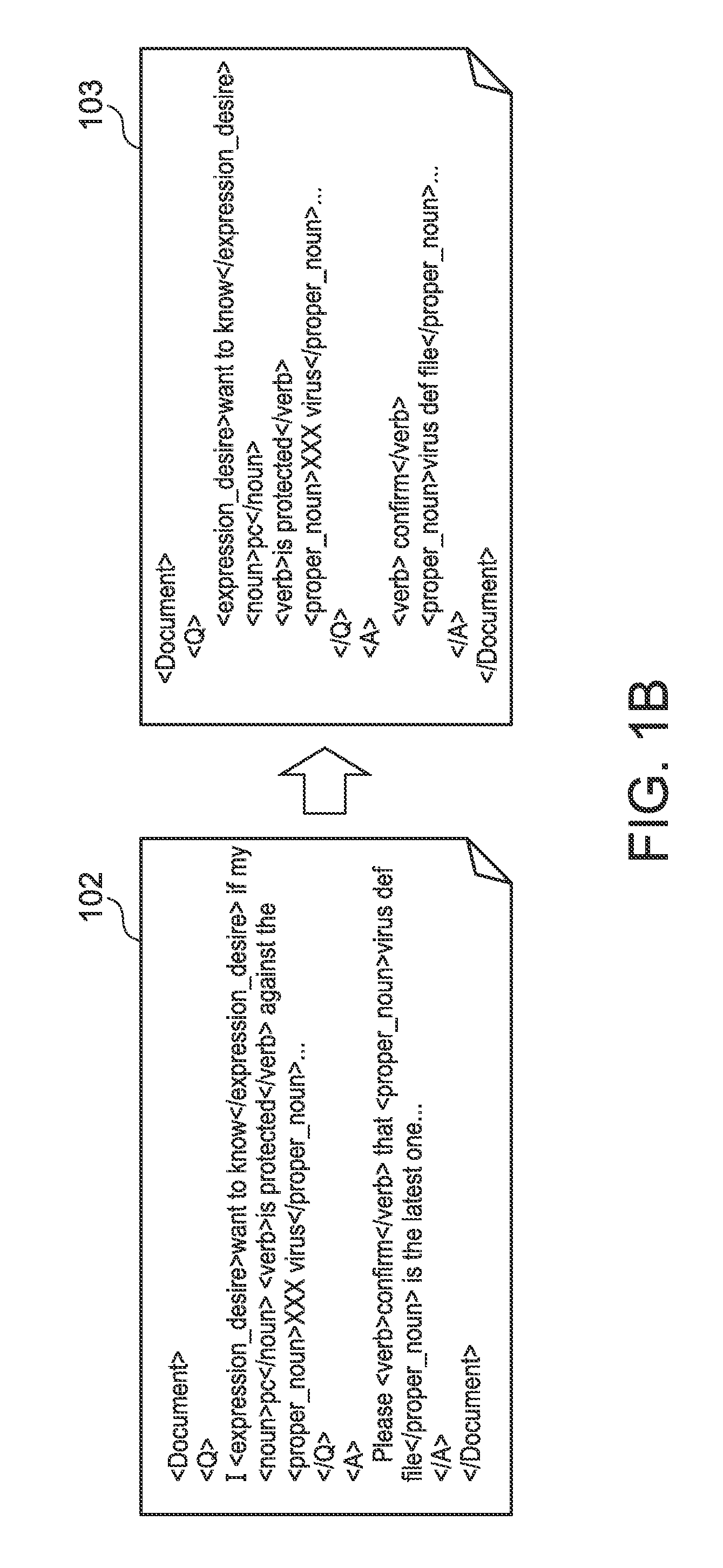Computer system for performing aggregation of tree-structured data, and method and computer program product therefor
a tree-structured data and computer system technology, applied in the field of computer system, method and computer program for aggregation of tree-structured data, can solve the problems of slow processing of conventional techniques, redundancy of data maintained for aggregation, and performance problems of massive data quantities
- Summary
- Abstract
- Description
- Claims
- Application Information
AI Technical Summary
Benefits of technology
Problems solved by technology
Method used
Image
Examples
experiment 1
[0240]The number of data used in Experiment 1 is 324677. A tree structure 1000 in FIG. 10A represents a structure of the data used in Experiment 1. The number of distinct elements of a ternary of the section, the node ID, and the value is 25150042.
[0241]The table schema of PostgreSQL is created by a subdivision method which is currently widely used. Moreover, the table schema is adapted to have a structure suitable for handling minimum data for speed enhancement. More specifically, the PostgreSQL table has been created for each section. The table has two INT columns. The node ID of a parent node and a node ID have been set in the table column corresponding to the nodes whose section is Document, Question, or Answer. The node ID of a parent nod and values have been set in the table column corresponding to the nodes other than the nodes whose section is Document, Question, or Answer. In cases where there is a plurality of values, records are prepared according to the number of the val...
experiment 2
[0255]The data used in Experiment 2 is from life science and the number of data is 700071. It is about twice as much as the number of the data used in Experiment 1. A tree structure 1003 in FIG. 10D represents a structure of the data. The number of distinct elements of a ternary of the section, the node ID, and the value is 163994676. It is more than approximately 6.5 times higher than the number of distinct elements of the data used in Experiment 1. The reason that the number of distinct elements is high in comparison with the ratio of the number of data, namely 2.2, equal to 700071 divided by 324677, is that one document from life science contains a larger quantity of text and therefore also contains a larger number of keywords.
[0256]The table schema of PostgreSQL, queries, and SQLs corresponding to the queries used in Experiment 2 are the same as those used in Experiment 1 except that “Question” of Experiment 1 is replaced with “Title”, and “Answer” of Experiment 1 is replaced wi...
PUM
 Login to View More
Login to View More Abstract
Description
Claims
Application Information
 Login to View More
Login to View More - R&D
- Intellectual Property
- Life Sciences
- Materials
- Tech Scout
- Unparalleled Data Quality
- Higher Quality Content
- 60% Fewer Hallucinations
Browse by: Latest US Patents, China's latest patents, Technical Efficacy Thesaurus, Application Domain, Technology Topic, Popular Technical Reports.
© 2025 PatSnap. All rights reserved.Legal|Privacy policy|Modern Slavery Act Transparency Statement|Sitemap|About US| Contact US: help@patsnap.com



